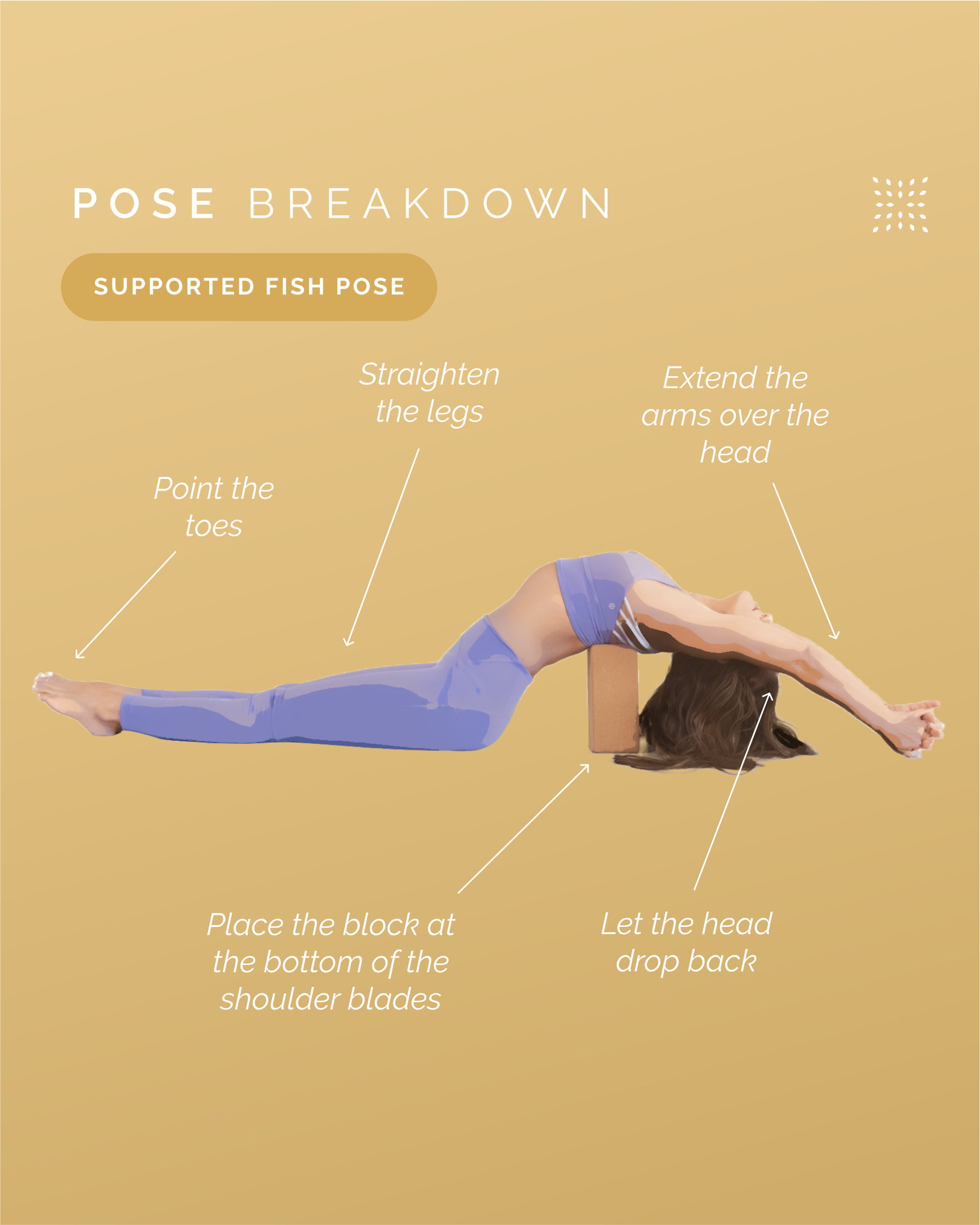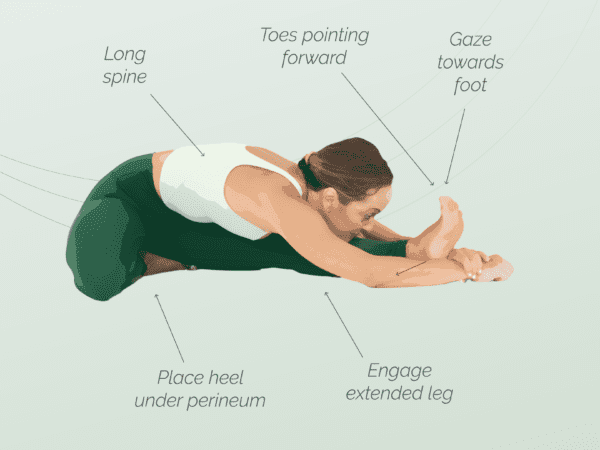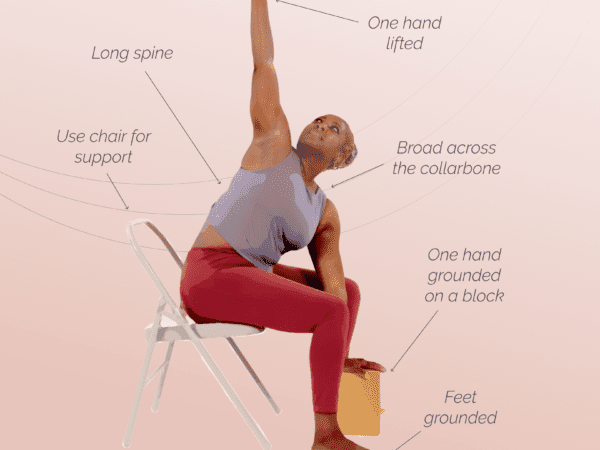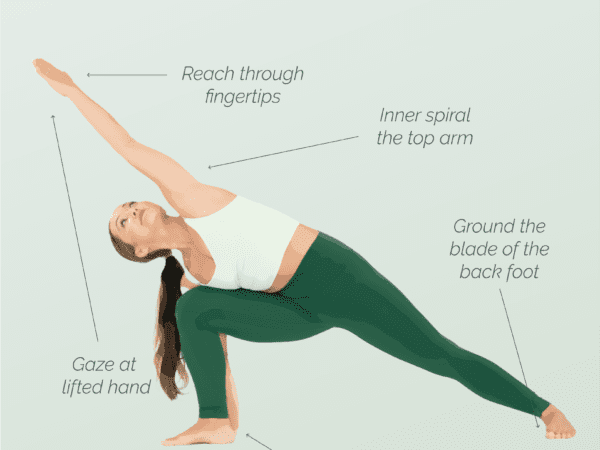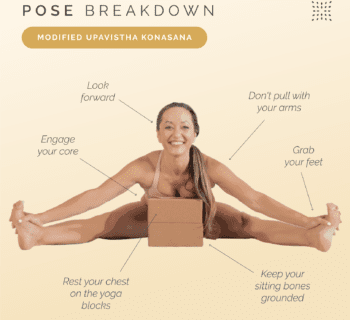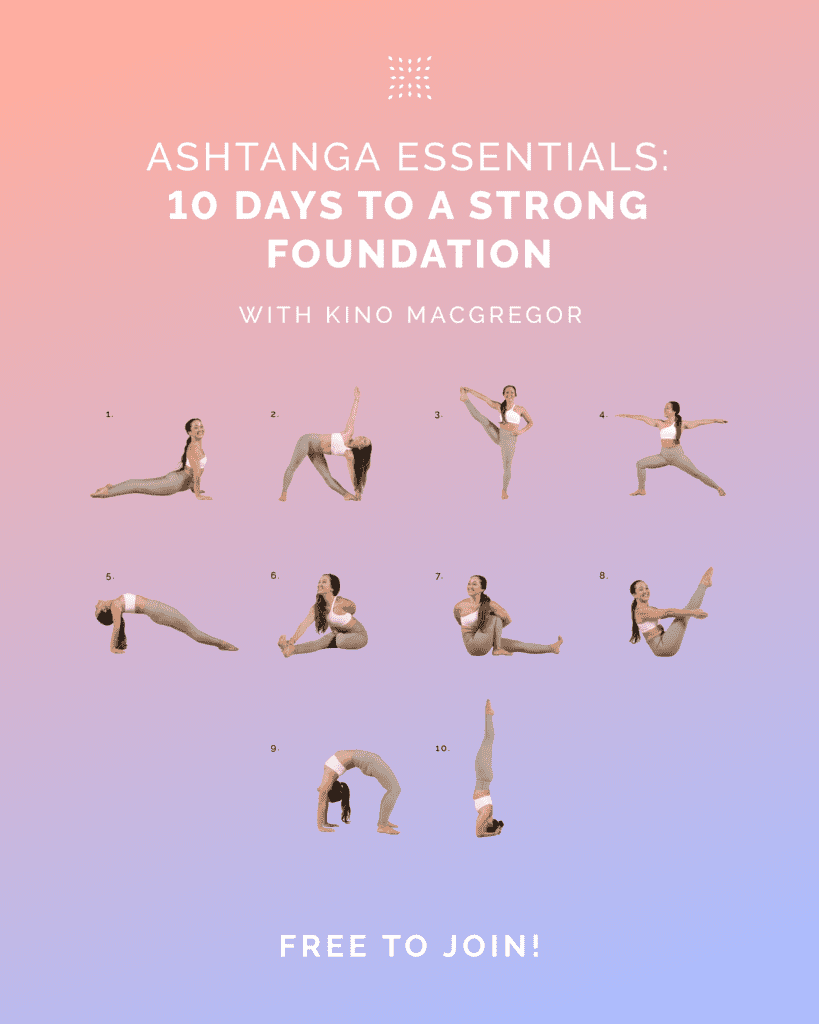Do you want to learn how to do supported fish pose? If you’re new to yoga and looking to expand your practice, this pose is a great one to incorporate into your routine. Supported fish pose, also known as matsyasana, offers a gentle stretch to the chest, shoulders, and neck while promoting relaxation and opening of the heart chakra. In this blog post, we will guide you step by step on how to properly perform this pose, ensuring a safe and beneficial practice. Let’s dive in!
What are the benefits of supported fish pose?
Supported fish pose, or matsyasana, offers a range of benefits for both the mind and body. Here are some of the key benefits:
1. Stretching the chest and shoulders: Supported fish pose helps to open up and stretch the muscles in the chest and shoulders, which can become tight and tense from hunching over or sitting for long periods of time.
2. Relieving tension in the neck and upper back: By gently arching the upper back and releasing tension in the neck, supported fish pose can help alleviate discomfort and stiffness in these areas.
3. Improving posture: Regular practice of this pose can help improve posture by counteracting the forward rounding of the shoulders which is common in many individuals.
4. Promoting relaxation: Supported fish pose is known for its calming and soothing effects. By opening the heart and expanding the chest, it can help to release stress and tension, promoting a sense of relaxation and calmness.
5. Opening the heart chakra: In yoga philosophy, the heart chakra, known as Anahata, is associated with love, compassion, and connection. Supported fish pose helps to activate and energize the heart chakra, fostering a sense of emotional well-being and openness.
Are there any risks or contraindications to supported fish pose?
While supported fish pose is generally considered safe and accessible for most individuals, there are a few risks to be mindful of:
1. Pre-existing Neck or Spinal Injuries: People with neck or spinal injuries should approach supported fish pose with caution. The backward bend may exacerbate any existing conditions or cause discomfort. It is advisable to seek guidance from a qualified yoga instructor or consult with a healthcare professional before attempting this pose if you have a history of such injuries.
2. High or Low Blood Pressure: If you have uncontrolled high or low blood pressure, it is recommended to exercise caution when practicing supported fish pose. The pose involves a slight inversion, which can affect blood pressure. It is advisable to consult with a healthcare professional before attempting this pose if you have any concerns or medical conditions related to blood pressure.
3. Pregnancy: Pregnant women should approach supported fish pose with caution. The pose involves lying on the back with the chest and abdomen open, which may not be suitable for some pregnant women, especially in later stages of pregnancy. It is best to consult with a prenatal yoga instructor or healthcare professional for modifications or alternative poses that are safe during pregnancy.
Contraindications of Supported Fish Pose:
In addition to the risks mentioned above, there are a few specific contraindications to be aware of when practicing supported fish pose:
1. Recent Surgery or Injury: If you have recently undergone surgery or have a fresh injury, it is important to avoid practicing supported fish pose until you have fully recovered. The pose puts pressure on the back and neck, which may interfere with the healing process or cause discomfort.
2. Osteoporosis or Osteopenia: Individuals with osteoporosis or osteopenia, conditions characterized by weak or brittle bones, should avoid supported fish pose. The backward bend can put stress on the spine and increase the risk of fractures or injuries. It is recommended to seek guidance from a healthcare professional or a qualified yoga instructor for alternative poses that support bone health.
How to do supported fish pose step-by-step instructions
1. Start by sitting on your mat with your legs extended in front of you. Place a yoga block behind you so when you lie back, it is at the bottom of your shoulder blades. you.
2. Slowly lower yourself onto the block, letting your head and neck relax toward the floor.
3. Extend your legs straight out in front of you and allow them to relax. Point your toes. Your arms can rest by your sides, palms facing up or bringing your arms up over your head so your forearms reach toward the floor.
4. Gently tuck your shoulder blades underneath you and feel the opening in your chest. Allow your chest to expand and your heart to lift.
5. Take a few deep breaths, focusing on expanding your chest with each inhale and relaxing any tension with each exhale.
6. If you feel comfortable, you can gently tilt your head back, allowing your neck to stretch and your throat to open. However, if you have any neck injuries or discomfort, it is best to keep your head in a neutral position.
7. Stay in the supported fish pose for 5 to 10 breaths, or as long as feels comfortable for you. Listen to your body and make any necessary adjustments to ensure that you are practicing the pose safely.
8. To come out of the pose, slowly bring your head back to a neutral position and use your hands your upper body as you sit up.
9. Take a moment to notice the effects of the pose on your body and mind. Supported fish pose can be a calming and rejuvenating pose, so take the time to appreciate these benefits.
What modifications can I make to supported fish pose if I am a beginner?
Use a bolster: To make the pose less intense, you can use a bolster instead of a yoga block to support your spine. Place the bolster behind you when sitting on your yoga mat and lie back so the bolster is fully supporting the spine.
Open the Legs: If you experience discomfort or strain in your lower back, you can modify the pose by bending your knees and bringing the soles of your feet together, allowing your knees to fall out to the sides. This modification helps to release tension in the lower back and hips, making the pose more accessible for beginners.
Adjust the Arm Position: To make the pose more comfortable for your shoulders and upper back, you can modify the position of your arms. Instead of extending them overhead, youcan place your arms alongside your body with your palms facing up. This allows for a more relaxed and comfortable position, especially if you have tight shoulders or limited mobility.
Remember, as a beginner, it is important to listen to your body and honor its limitations. Do not push yourself into any position that feels uncomfortable or causes pain. Gradually work your way into the pose and make adjustments as needed to ensure a safe and enjoyable practice. With time and practice, you will be able to experience the full benefits of supported fish pose.
Are you looking for more guidance on your yoga journey? Sign up for Omstars to get access to thousands of yoga classes in the comfort of your own home. Click here to start your subscription.


